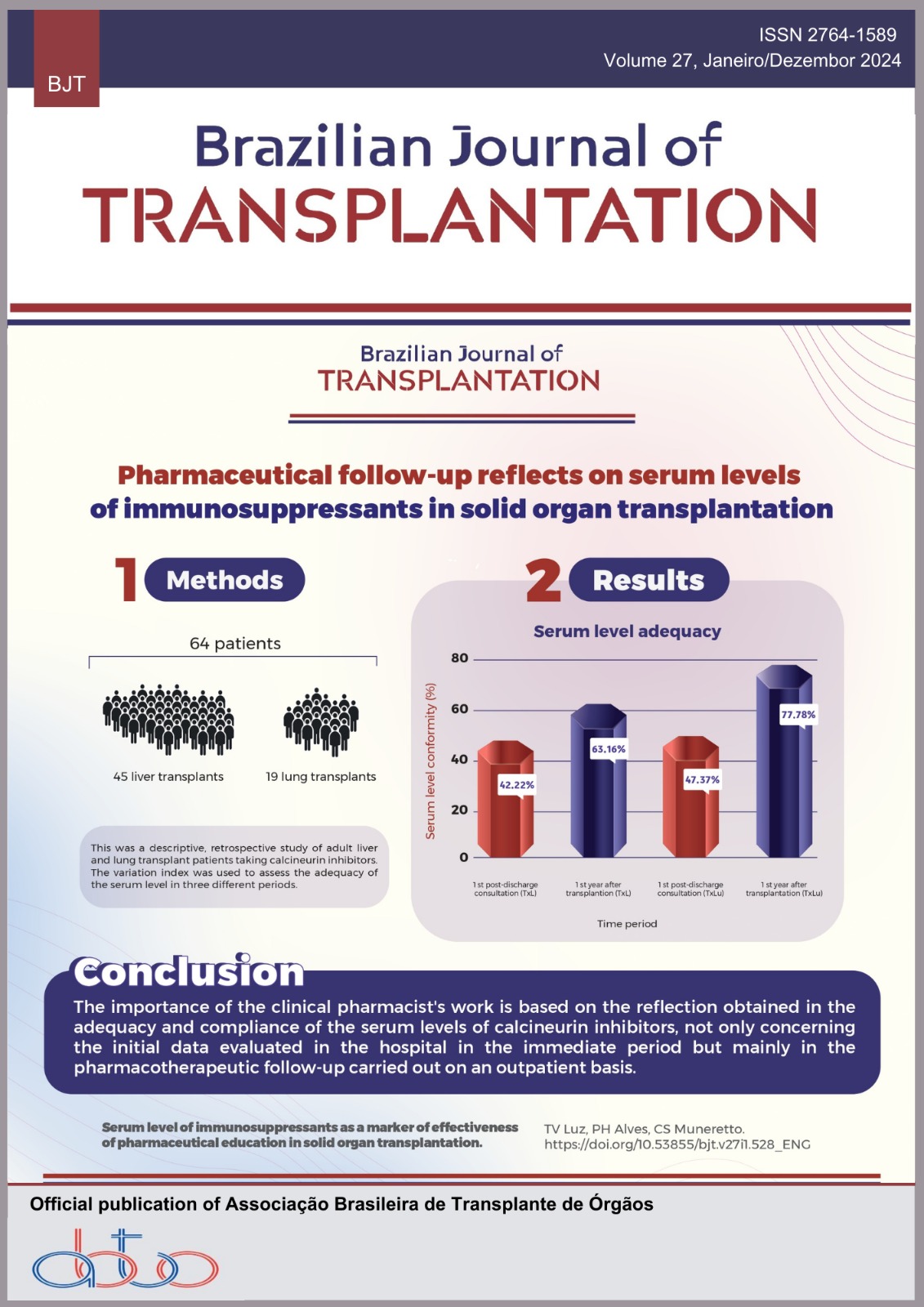Treatment of Renal Capsule Lesion in a Transplanted Kidney: A Case Report and Literature Review
Palabras clave:
Kidney Transplantation, Chronic Kidney Disease, Organ Retrieval Surgery, Degloving InjuryResumen
Expanded donor criteria have been established to reduce organ wastage, as various factors can lead the disposal of kidneys, such as anatomical abnormalities, traumatic injuries, and iatrogenic injuries during organ retrieval surgery. We report a case of kidney transplantation in which a capsular lesion was identified and repaired during organ preparation (back table) and review of the literature regarding transplant kidney injuries. A diabetic and hypertensive 52-year-old patient with chronic kidney disease undergoing dialysis therapy for 2 years was admitted for a deceased donor kidney transplant. The donor was a 35-year-old man with brain death secondary to traumatic brain injury in a car accident. During the kidney preparation on the back table, a capsular lesion was visualized on the upper pole of the right kidney. Continuous suture of the renal capsule was performed using a 3-0 CatGut suture to correct the defect and reconstruct the renal surface. After renal reperfusion, no active bleeding was observed from the sutured area. The patient had a good postoperative course with no complications. The main complications associated with capsular lesions and complete capsular denudation are bleeding and hematoma formation, as well as urinary and lymphatic extravasation through the exposed renal parenchyma. Treatment may involve direct cauterization using electrocautery or argon plasma, or the use of hemostatic agents. Successful repair of capsular lesions not only prevents complications such as bleeding during reperfusion and urinary fistulae but also plays a crucial role in expanding the pool of organs available for transplantation.
Descargas
Citas
Stewart D, Mupfudze T, Klassen D. Does anybody really know what (the kidney median waiting) time is? Am J Transplant. 2023; 23(2): 223-31. https://doi.org/10.1016/j.ajt.2022.12.005
Mekeel KL, Mazur MJ, Reddy KS, Mulligan DC, Heilman RL, Chakkera HA, et al. Diffuse parenchymal urine leak after kidney transplantation following degloving injury during donor nephrectomy. Am J Transplant. 2007; 7(8): 2039-41. https://doi.org/10.1111/j.1600-6143.2007.01870.x
Sezhian N, Modlin CS, Ghoneim I, Zaramo CEB, Flechner S. Renal allograft capsular repair surgical technique to reduce allograft discard rates of kidneys with capsular injury. J Natl Med Assoc. 2012;1 04(3-4): 199-201. https://doi.org/10.1016/s0027-9684(15)33520-3
Roarke MC, Nguyen BD. Degloving of the renal capsule during live donor nephrectomy leading to post-transplant urine leak in recipient findings on post-transplant renal scintigraphy. Clin Nucl Med. 2008; 33(6): 432-3. https://doi.org/10.1097/RLU.0b013e318170d47e
Ochi A, Muro S, Adachi T, Akita K. Zoning inside the renal fascia: the anatomical relationship between the urinary system and perirenal fat. Int J Urol. 2020; 27(7): 625-33. https://doi.org/10.1111/iju.14248
Breda A, Stepanian SV, Lam JS, Liao JC, Gill IS, Colombo JR, et al. Use of haemostatic agents and glues during laparoscopic partial nephrectomy: a multi-institutional survey from the United States and Europe of 1347 cases. Eur Urol. 2007; 52(3): 798-803. https://doi.org/10.1016/j.eururo.2007.02.035
Wainstein MA, Resnick MI. Use of polyglycolic acid mesh to support parenchymal closure following partial nephrectomy. J Urol. 1997;158(2): 526-7. https://doi.org/10.1016/S0022-5347(01)64526-9
Descargas
Publicado
Cómo citar
Número
Sección
Licencia
Derechos de autor 2024 Gabriel Chahade Sibanto Simões, Ana Beatriz Pereira de Souza, Lukas Costa Salles, Caio de Oliveira, Arthur Degani Ottaiano, Marilda Mazzali, Ricardo Miyaoka, Adriano Fregonesi

Esta obra está bajo una licencia internacional Creative Commons Atribución 4.0.










